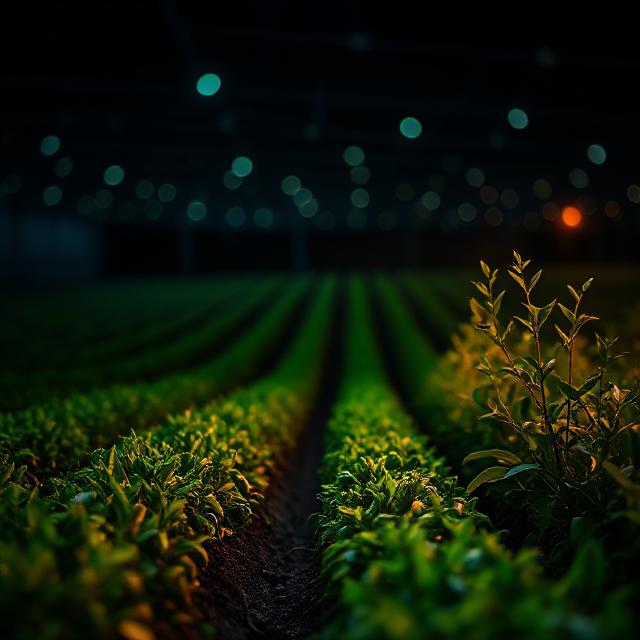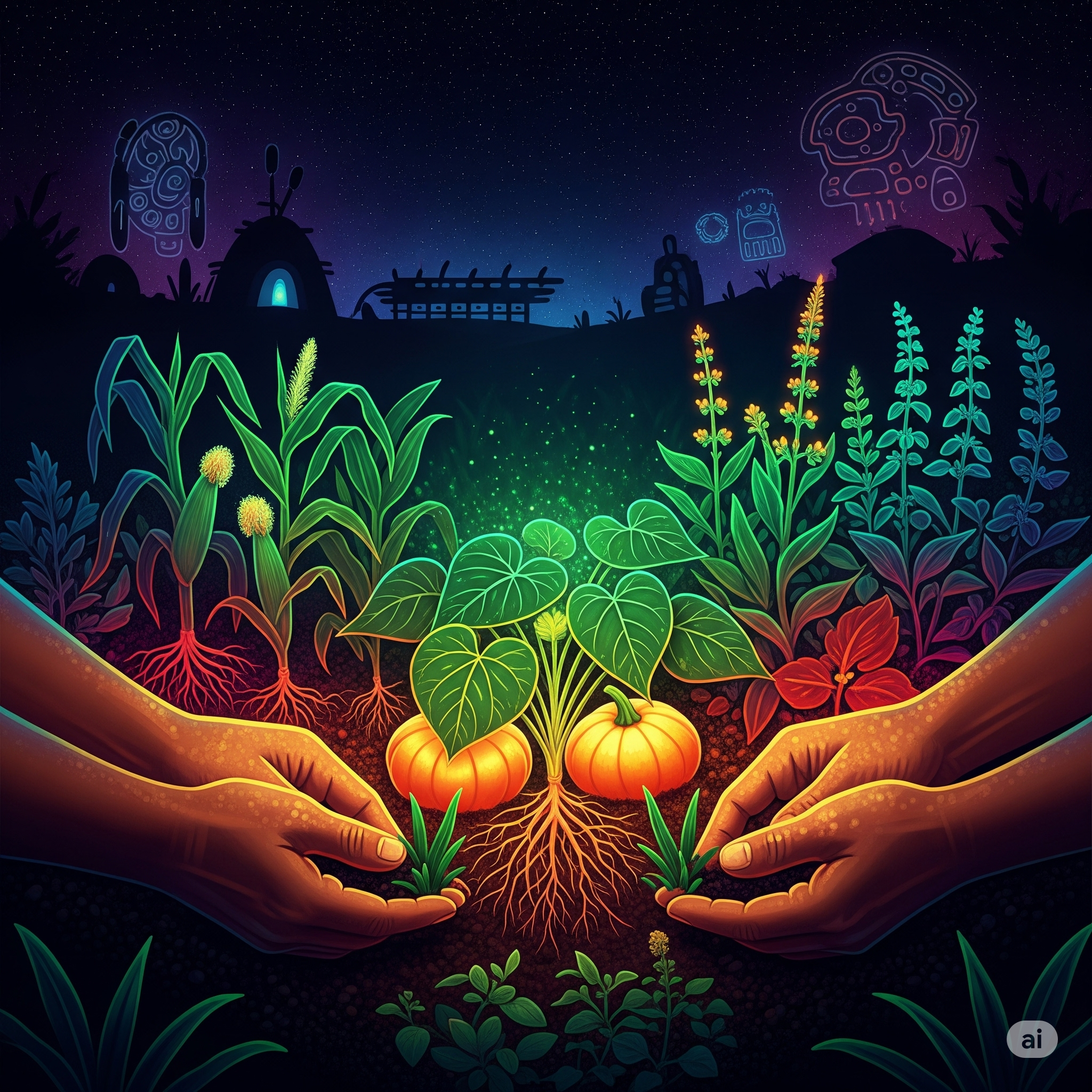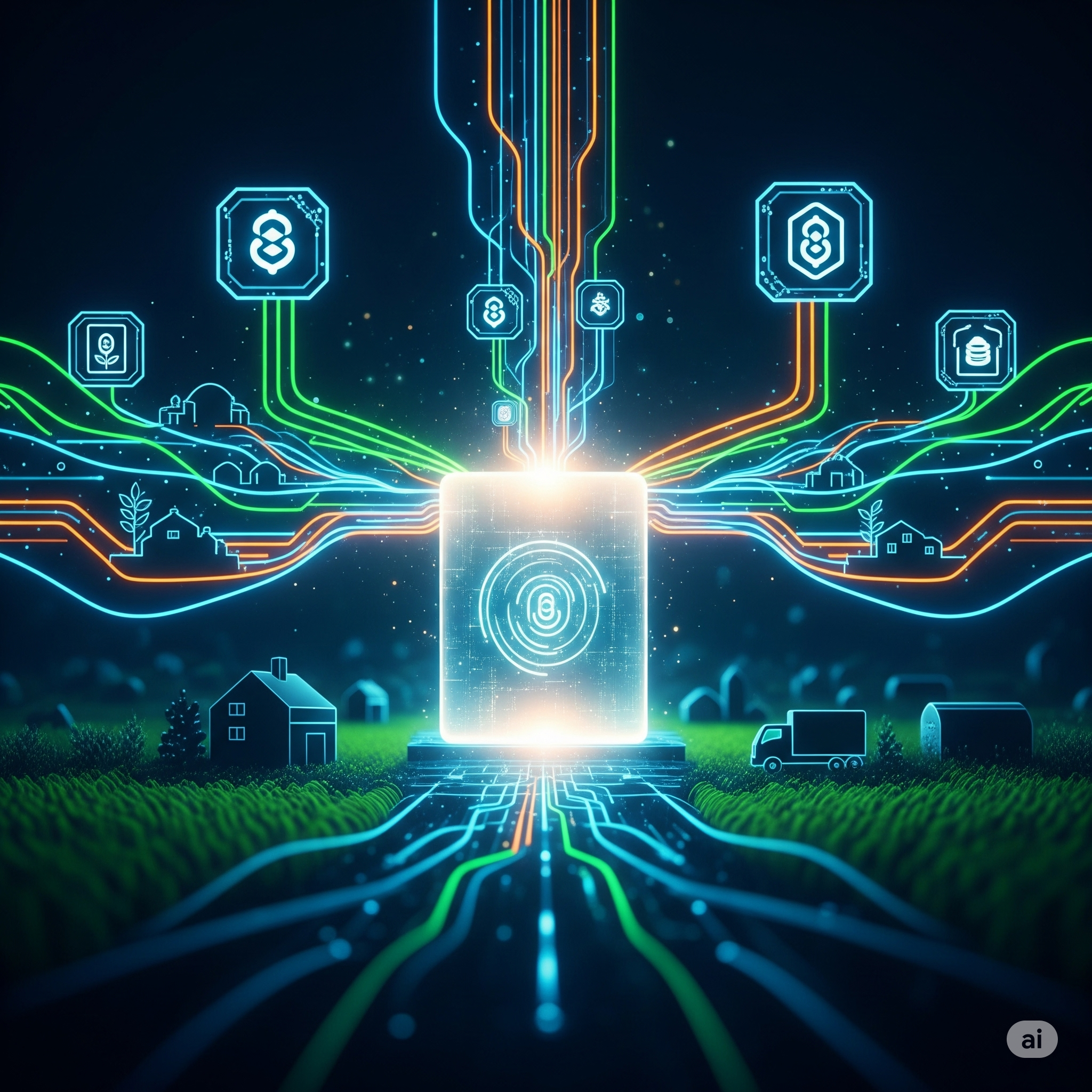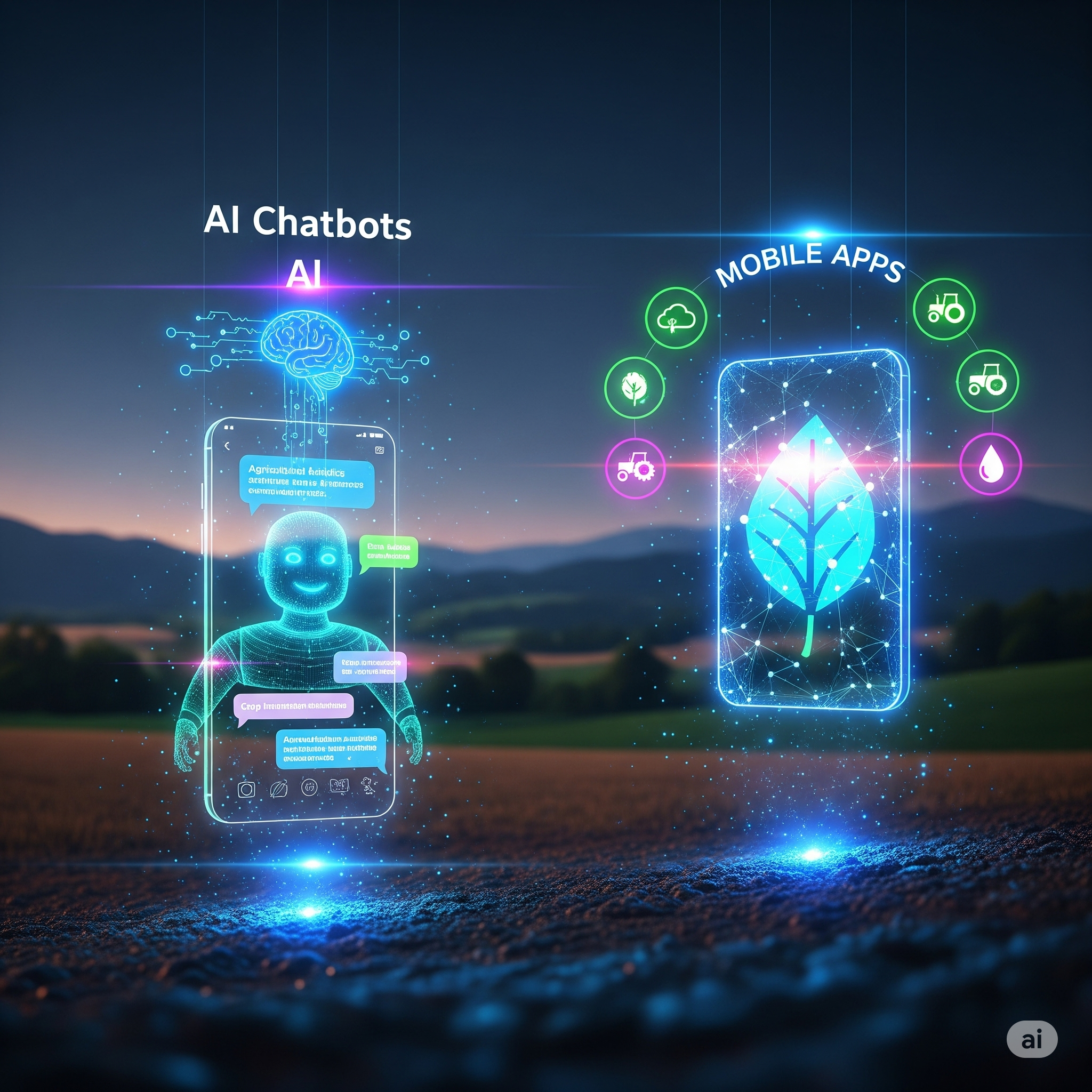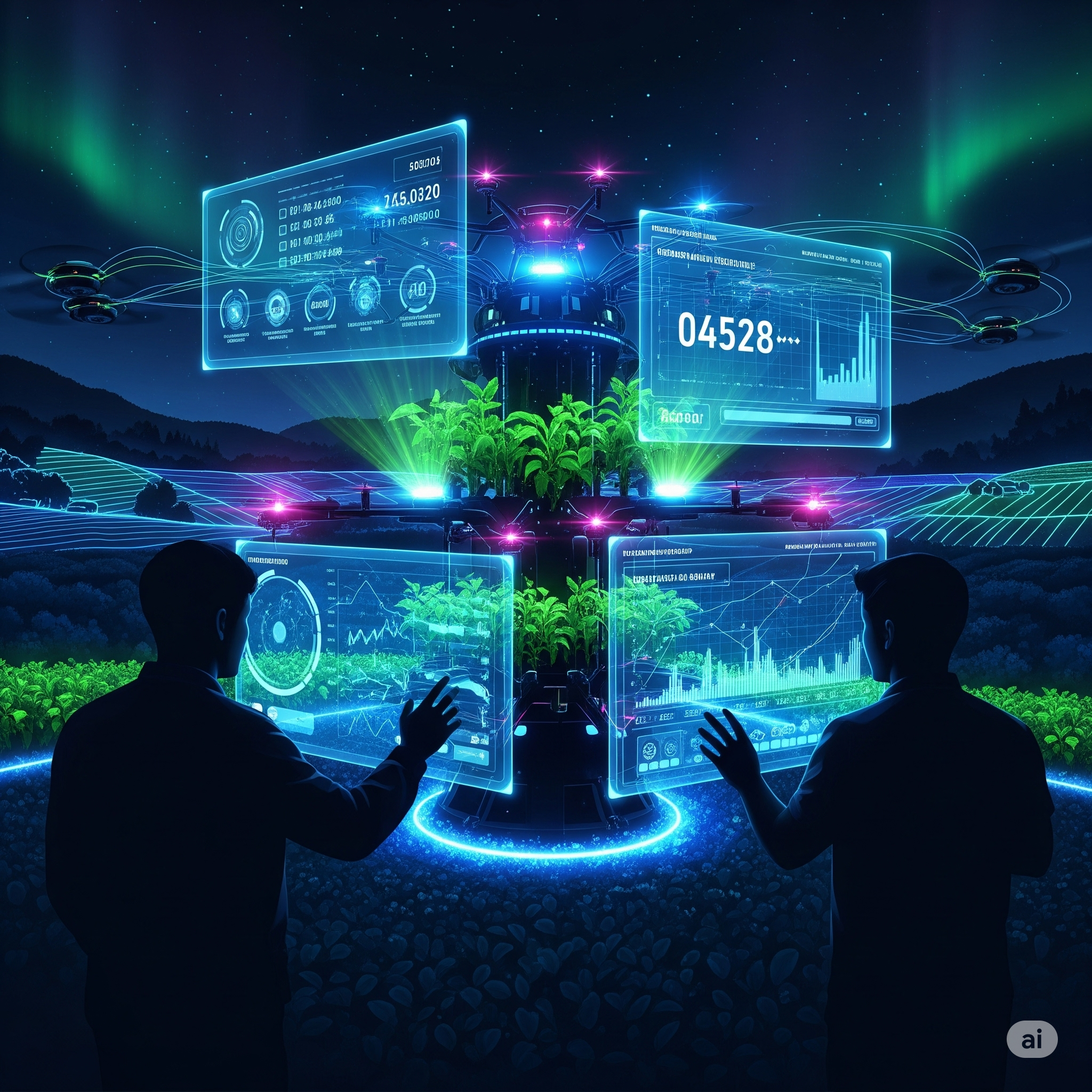Introduction
Agriculture, a cornerstone of human civilization, is undergoing a major transformation. With growing food demand, climate change, resource depletion, and the need for sustainable practices, traditional farming methods are being replaced or supplemented by advanced technologies. One of the most revolutionary changes is the rise of Precision Agriculture (PA)—a farming management concept that uses digital technologies to monitor and optimize agricultural production. Two technologies at the heart of this revolution are Artificial Intelligence (AI) and the Internet of Things (IoT). These tools are empowering farmers to make data-driven decisions, increase efficiency, reduce environmental impact, and ensure food security.
What is Precision Agriculture?
Precision agriculture, also known as precision farming or site-specific crop management, is a data-based approach to managing farm inputs and outputs. It uses geospatial tools, sensors, automation, and advanced analytics to:
- Monitor crop health
- Track soil conditions
- Optimize water usage
- Predict yields
- Detect diseases or pests early
- Apply fertilizers and pesticides in targeted ways
The objective is to make farming more precise, controlled, and resource-efficient, ultimately improving productivity while minimizing environmental impact.
The Role of AI in Precision Agriculture
Artificial Intelligence in agriculture refers to the use of machine learning algorithms, computer vision, and predictive analytics to analyze large volumes of data generated on farms. Here’s how AI is making a difference:
1. Crop Monitoring and Health Analysis
AI-powered tools can analyze satellite or drone images using computer vision algorithms to detect:
- Nutrient deficiencies
- Water stress
- Pest infestations
- Fungal diseases
This helps farmers take timely action, reducing yield loss and chemical usage.
2. Yield Prediction
AI models can forecast crop yields by analyzing historical data, real-time weather conditions, and soil parameters. These insights help in:
- Strategic planning
- Market forecasting
- Supply chain optimization
3. Weed and Pest Detection
Computer vision systems identify weed types and pest infestations in real-time. AI can distinguish between crops and weeds, allowing for targeted herbicide application, reducing costs and environmental impact.
4. Automated Machinery and Robotics
Autonomous tractors and robotic harvesters use AI for navigation, obstacle detection, and efficient task performance. AI enables machines to:
- Follow GPS routes
- Adjust actions based on crop density
- Harvest only ripe produce
5. Decision Support Systems (DSS)
AI-based DSS help farmers with:
- Fertilizer schedules
- Irrigation timing
- Optimal planting dates
By processing various inputs, these systems suggest best practices for increasing output.
The Role of IoT in Precision Agriculture
The Internet of Things (IoT) connects physical devices—such as sensors, cameras, and drones—to the internet, enabling real-time data collection, communication, and remote control. Here’s how IoT is transforming farming:
1. Soil Monitoring Sensors
IoT soil sensors measure:
- Moisture content
- Temperature
- pH levels
- Nutrient levels
Farmers can monitor soil health remotely and adjust irrigation or fertilization accordingly, reducing waste and ensuring optimal conditions for growth.
2. Weather Monitoring
IoT weather stations on farms provide hyper-local forecasts by tracking:
- Temperature
- Humidity
- Wind speed
- Rainfall
This allows precise scheduling of sowing, harvesting, and irrigation.
3. Smart Irrigation Systems
IoT-enabled irrigation systems adjust water delivery based on soil moisture readings and crop requirements. This leads to:
- Water conservation
- Better yield quality
- Reduced human intervention
4. Livestock Monitoring
Wearable IoT devices on cattle track:
- Body temperature
- Movement
- Reproductive cycles
These insights help in disease prevention, timely breeding, and better animal welfare.
5. Remote Equipment Monitoring
IoT can track the performance of machinery in real-time. It alerts farmers to potential failures, schedule maintenance, or monitor fuel consumption, increasing efficiency and uptime.
Integration of AI and IoT: A Powerful Synergy
While AI brings intelligence and decision-making capabilities, IoT provides the sensory and data-gathering foundation. Together, they form a powerful ecosystem that enhances every step of the farming process.
Example: Smart Greenhouses
In smart greenhouses:
- IoT sensors collect data on temperature, humidity, light, and CO₂ levels.
- AI algorithms analyze this data to adjust fans, shades, and irrigation systems automatically.
- The result is an optimized growth environment with minimal manual input.
Example: Precision Crop Spraying
AI drones scan fields using cameras. Based on the data, they calculate exact spray areas. IoT-enabled sprayers then deliver chemicals only where needed, reducing usage by up to 90%.
Benefits of AI and IoT in Precision Agriculture
1. Increased Productivity
Real-time monitoring and predictive analysis help optimize resource use and improve crop yields.
2. Resource Efficiency
AI and IoT systems ensure the right amount of water, fertilizers, and pesticides are used, reducing input costs.
3. Sustainability
By minimizing chemical usage and conserving water, precision agriculture supports environmentally sustainable practices.
4. Risk Reduction
Early warnings about pests, diseases, or extreme weather allow timely interventions, reducing crop failures.
5. Labor Efficiency
Automation and robotics reduce the need for manual labor, addressing labor shortages in many agricultural regions.
Challenges in Adoption
Despite the promise of AI and IoT, precision agriculture faces several hurdles:
1. High Initial Costs
Advanced sensors, drones, and AI systems can be expensive, making them inaccessible for small-scale farmers.
2. Connectivity Issues
Many rural areas lack stable internet connectivity, hindering IoT device operations and data transmission.
3. Data Security and Privacy
The large volume of sensitive farm data poses risks if not adequately protected from cyber threats.
4. Technical Know-how
Farmers need digital literacy and training to operate and maintain smart farming technologies effectively.
5. Fragmented Technology Ecosystem
Lack of standardization across devices and platforms can lead to interoperability issues, complicating integration.
Government and Industry Initiatives
Governments and private players globally are promoting smart farming:
India
- Digital Agriculture Mission (2021–2025): Promotes data-driven agriculture using AI and IoT.
- eNAM: Integrates AI-based price forecasting and IoT-based quality checks for agricultural produce.
- Precision Farming Development Centre (PFDC): Encourages adoption through research and farmer training.
Globally
- European Union’s SmartAgriHubs Project: Supports digital innovation in agriculture.
- USDA’s Climate Smart Agriculture Programs: Invests in AI-based sustainable agriculture.
- FAO’s Digital Agriculture Strategy: Guides countries in adopting tech-driven farming.
Future Trends in Precision Agriculture
As technology evolves, several future trends are expected to shape precision agriculture:
1. Edge Computing
Edge computing allows IoT devices to process data locally, reducing latency and bandwidth usage.
2. 5G Connectivity
Faster data transmission and lower latency will enhance real-time AI analytics and IoT applications.
3. AI-Powered Robotics
Multi-functional autonomous robots for sowing, spraying, weeding, and harvesting will become more mainstream.
4. Blockchain Integration
Blockchain can ensure traceability and transparency in the food supply chain, aiding in smart contract farming.
5. Digital Twins
Digital replicas of farms can simulate scenarios and help plan inputs, yields, and finances with higher precision.
Case Studies
1. John Deere’s AI Tractors
John Deere has introduced AI-powered tractors equipped with computer vision and GPS. They analyze crop rows in real-time and make adjustments during planting and harvesting, increasing accuracy and reducing waste.
2. CropIn Technology (India)
CropIn offers AI-based farm management solutions, using satellite imagery and weather data to help farmers make informed decisions. It has benefited over 7 million farmers across 52 countries.
3. IBM Watson Decision Platform for Agriculture
IBM’s AI platform integrates IoT, satellite imagery, and weather data to provide predictive insights. It has been used by agribusinesses to reduce crop loss and optimize production.
Conclusion
Precision agriculture, powered by AI and IoT, represents the future of farming. It brings the promise of increased productivity, sustainability, and resilience, especially vital in the face of global challenges like climate change and food insecurity. While barriers like cost, connectivity, and technical expertise remain, continued policy support, private innovation, and farmer training can accelerate the adoption of these technologies. As more farms turn digital, agriculture will become not just more efficient, but smarter and more sustainable—feeding the future with precision.
Summary Points:
Government support and industry innovation are key to large-scale adoption.
Precision agriculture uses digital tools to optimize farming inputs and outputs.
AI enables data analysis, decision-making, and automation.
IoT provides real-time data via sensors, drones, and machines.
Benefits include higher yield, lower resource use, and better sustainability.
Challenges include cost, connectivity, and digital literacy.
